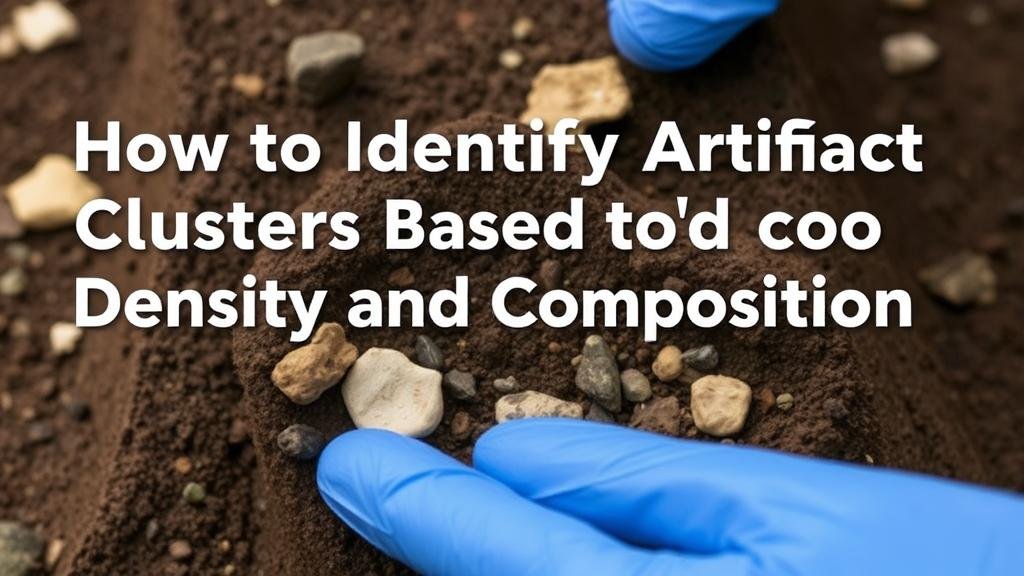How to Identify Artifact Clusters Based on Soil Density and Composition
Identifying Artifact Clusters Based on Soil Density and Composition
The identification of artifact clusters is a fundamental aspect of archaeological fieldwork. By examining soil density and composition, researchers can not only locate potential sites of historical significance but also understand human activity patterns over time. This article provides a systematic approach to identifying artifact clusters through an exploration of soil properties and their implications for archaeological interpretation.
The Importance of Soil in Archaeological Analysis
Soil is a critical variable in archaeological research, serving as both the medium in which artifacts are found and a record of past environmental conditions. Soil density and composition can reveal information about site usage, such as areas of intensive human activity versus those that were more transient or occupied sporadically. Specific soils may preserve artifacts better than others due to their chemical and physical properties.
Characteristics of Soil Density
Soil density is determined by the mass of soil per unit volume, which is influenced by its composition, structure, and moisture content. Knowing how to measure and interpret these characteristics is essential for accurately identifying artifact clusters. Generally, denser soils can indicate areas of significant human activity due to the accumulation of materials.
Key points regarding soil density include:
- Bulk Density: This is a measure of soil mass per unit volume and can indicate changes in soil structure caused by human activities, such as compaction.
- Particle Density: This refers to the density of the solid particles in the soil, independent of pore space, and can help differentiate between various soil textures.
Understanding Soil Composition
The composition of soil–the minerals, organic matter, and moisture it contains–plays a vital role in archaeological sites. By examining these components, researchers can gain insights into the historical usage of areas. For example, a high organic content might indicate a location once used for farming or habitation.
Key components of soil composition to consider include:
- Sand, Silt, and Clay: The relative proportions of these three particles can indicate soil fertility and suitability for settlement.
- Organic Materials: The presence of decomposed plant material can provide clues about past vegetation and human agricultural practices.
Methods for Analyzing Soil Density and Composition
Several methodologies can be employed to analyze soil density and composition effectively. e include:
- Soil Sampling: Collecting soil samples from various depths and locations to test density and composition in a laboratory setting.
- Ground Penetrating Radar (GPR): This non-invasive technique can detect variations in soil density and help identify buried artifacts.
- Spectral Analysis: Utilizing optical techniques to measure soil color, which can indicate organic content and moisture levels.
Case Studies in Artifact Cluster Identification
Several archaeological studies demonstrate the application of soil analysis in identifying artifact clusters. For example, an investigation at a prehistoric settlement in the Midwest United States utilized soil density measurements to delineate areas of concentrated societal activity. The resultant maps indicated clusters consistent with dwellings and communal spaces, validated by the discovery of corresponding artifacts.
Another case involved the examination of a colonial-era site in Virginia, where soil composition analysis revealed a high density of ceramics and glass artifacts in sandy clay loam. This finding pointed to areas where domestic activities likely took place, aligning closely with historical records of settlement patterns.
Challenges in Soil Analysis
While soil analysis provides valuable insights, several challenges can impede the identification of artifact clusters. These issues include:
- Soil Disturbance: Modern agricultural practices or natural erosion can disrupt soil layers, making it difficult to ascertain historical contexts.
- Variable Soil Conditions: The heterogeneity of soils can result in misleading interpretations if not carefully considered.
Conclusion: Best Practices for Identifying Artifact Clusters
Identifying artifact clusters based on soil density and composition is a multidimensional process that requires careful consideration of various methods and implications. To facilitate effective identification:
- Conduct thorough soil sampling and analysis using a combination of field and laboratory techniques.
- Use advanced technology such as GPR for non-invasive exploratory surveys.
- Cross-reference findings with historical records to contextualize artifacts within their cultural and temporal settings.
Ultimately, by integrating soil analysis into archaeological methodologies, researchers can improve their understanding of historical human behavior and site usage, leading to richer interpretations of the archaeological record.


